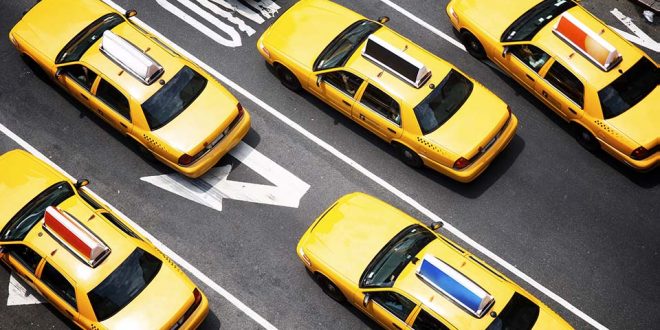A new NUS research finds that taxi cabs painted yellow are 9 percent less likely to be involved in accidents than ones painted blue.
The study was led by Professor Ho Teck Hua, NUS Deputy President (Research & Technology) and Tan Chin Tuan Centennial Professor, in collaboration with Associate Professor Chong Juin Kuan from NUS Business and Assistant Professor Xia Xiaoyu from The Chinese University of Hong Kong Business School. The findings were published in the scientific journal Proceedings of the National Academy of Sciences in March 2017.
The team analysed three years of detailed taxi, driver and accident data, comprising millions of data points, of a company’s fleet of about 4,175 yellow taxis and 12,525 blue taxis in Singapore. They found that yellow taxis were 9 per cent less likely to have an accident because they are more noticeable than blue taxis, making it easier for drivers to avoid hitting them.
The team also looked at data collected by satellite-tracking devices in the taxis and observed identical driving patterns for drivers of both yellow and blue taxis, ruling out driver difference as an explanatory variable in their observation. Furthermore, all taxis were of the same model and underwent the same maintenance schedules. This further signalled that any differences in safety between the two was due to their respective colours.
The researchers calculated that switching the colour of all taxis in the fleet to yellow could result in 917 fewer accidents per year and generate annual savings of $2 million.
“Although there is anecdotal evidence on higher accident rates for dark coloured vehicles, few studies have empirically established a strong causal link between colour and accident risk. The findings of our study suggest that colour visibility should play a major role in determining the colours used for public transport vehicles. A commercial decision to change all taxis to yellow may save lives and potentially reduce economic losses by millions of dollars. Our results are also noteworthy to smaller taxi companies and to drivers who use their private vehicles as taxis to work for private-hire car services,” said Prof Ho.
Agencies/Canadajournal
 Canada Journal – News of the World Articles and videos to bring you the biggest Canadian news stories from across the country every day
Canada Journal – News of the World Articles and videos to bring you the biggest Canadian news stories from across the country every day



